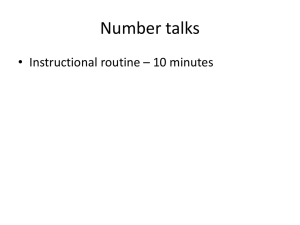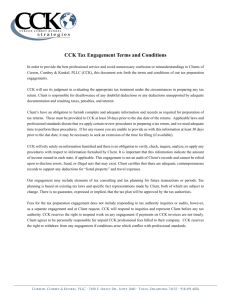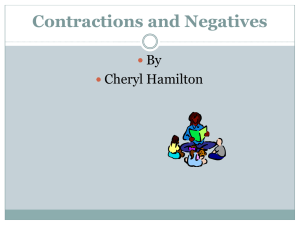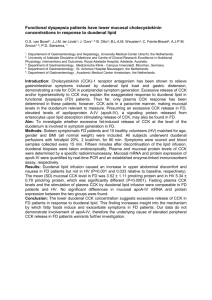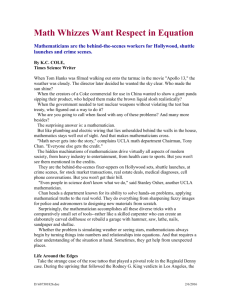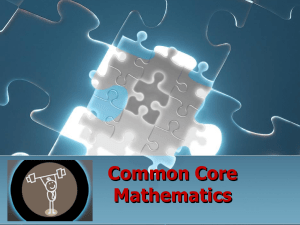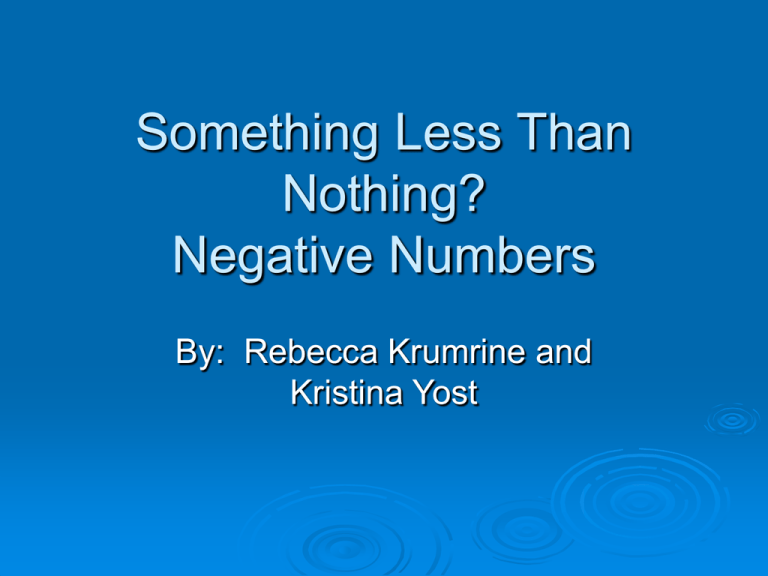
Something Less Than
Nothing?
Negative Numbers
By: Rebecca Krumrine and
Kristina Yost
Introduction
Negative
numbers were not generally
accepted until a few hundred years
ago.
Negative
numbers first appeared
when people began to solve
equations.
Lets try a problem…
I
am 18 years old and my sister is 11.
When will I be exactly twice as old as
my sister?
How
would you react to that answer if
you did not know about negative
numbers?
Main Topics
Development
numbers in…
China
Greece
India
Middle East
Europe
of concepts of negative
China 100BCE – 50BCE
In
the “Nine Chapters of Mathematical Art”
they used red rods as positive coefficients
and black rods for negative coefficients to
explain methods for finding area of figures.
The Nine Chapters also included rules for
dealing with negative numbers.
Greece 570BCE – 300BCE
Greeks
ignored negative numbers
completely.
Aristotle made a distinction between
numbers and magnitude, but gave no
indications of the concept of negative
numbers.
Euclid continued this distinction in his
work Elements.
Greece 3rd century CE
Diophantus
did not deal with negative
numbers but he was aware of rules for
multiplying with the minus and solving
equations.
In book V of his Arithmetica, he
encounters the equation 4x+20 = 4
He believes that this problem is absurd,
since to him 4x + 20 meant adding
something to 20 to equal 4.
India 7th century CE
Brahmagupta recognized and worked with
negative numbers.
Positive numbers were possessions and negative
numbers were debts
Stated rules for adding, subtracting,
multiplying, and dividing negative numbers in
his work Correct Astronomical System of
Brahma.
Expanded on Diophantus concepts of the
quadratic equations (ax2 + bx = c, bx + c =
ax2, ax2 + c = bx) using negative numbers
forming the general form of the quadratic
equations.
India 12th century CE
Bhaskara
gives negative roots, but rejects
the negative root since it was
inappropriate in the context of the
problem.
“…For people have no clear understanding in
the case of a negative quantity”
Middle East 9th century CE
Arabs were familiar with negative numbers
from the work of India mathematicians, but
they rejected them.
Muhammad Ibn Musa Al-Khqarizimi did not use
negative numbers or negative coefficients in his
two books.
Knew how to expand products such as
(x – a)(x – b), but they only used this concept
when the problems involved subtractions
whose answers are positive.
Europe 16th Century
Negative numbers were still being ignored
and considered as “fictitious solutions.”
Mathematicians of this time still resisted
negative numbers and thought of them as
“fictitious” or “absurd.”
Some of the mathematicians of this time
were:
Cardano from Italy
Stifel from Germany
Viete from France
Europe 17th Century
Negative
numbers started to become
accepted.
Along with the acceptance, came the
realization of problems with negative
numbers.
I.e. square roots of negatives
Rene
Descartes partially accepted
these numbers.
Question:
When
taking the square root of a
negative number, we refer to the
result as….?
IMAGINARY!!
Rene
Descartes was the mathematician
who called these results imaginary!
17th century continued…
Many
mathematicians who started
accepting negatives didn’t know where
they belonged in relation to positives.
One math guy, John Wallis, thought that
negatives were larger than infinity.
Isaac
Newton wrote a book in 1707
called Universal Arithmetick. In this
book he states, “Quantities are either
Affirmative or greater than nothing, or
Negative, or less than nothing.”
Questions for thought…
How
can a quantity of something be
negative and less than nothing?
Can
you have a negative quantity of
books, food, clothing, or money?
It
was hard for people to grasp the
concept of negative numbers being
debt.
Europe Middle 18th century
Negatives are officially accepted as real
numbers!!
Euler was fine with negatives during the
writing of his book Elements of Algebra.
Even though negative numbers were known
and used, it was common for people to still
ignore them as results to equation systems.
It was still common practice to ignore a
negative results in any system of equations.
Europe 19th century
Negatives
finally become important
enough to not be ignored.
The works of Gauss, Galois, and
Abel really had a big impact on
equation systems with negative
results.
Doubts of negative numbers finally
disappear.
Summary
Although
negative numbers were
“discovered” in BCE, negative numbers
were not completely accepted until the
1800’s.
Still, generally, mathematicians used
negative numbers in computations, but did
not understand the concept of them.
Timeline
4th century BCE- Aristotle made a distinction
between numbers and magnitude.
100 BCE- In the Nine Chapters of Mathematical
Art, the Chinese used negative numbers in
solving systems of equations.
3rd century CE- Diophantus solved equations with
negative numbers in Arithmetica, but then
rejected the equation itself.
7th century CE- Indians used negative numbers
to represent debt.
9th century CE – Arabs were familiar with
negative numbers, but rejected them.
12th century CE- Bhaskara (Indian) gives
negative roots for quadratic equations, but rejects
the roots because people do not approve of
negative roots.
Timeline continued…
16th Century CE- European Mathematicians
thought of negative numbers as “fictitious” or
“absurd.”
17th Century CE- Rene Descartes claims the
result of negative square roots as “imaginary.”
18th Century CE- Negatives start to become
accepted in Europe even though they are still
commonly ignored.
19th Century CE- Doubts of negative numbers
finally disappear and negatives are known
now as real numbers.
References
Berlinghoff, William P. , and Fernando Q. Gouvea.
Math through the Ages A Gentle History for Teachers
and Others. 1st ed. Farmington, Maine: Oxton House
Publishers, 2002.
Katz, Victor J.. A History of Mathematics. New York:
Pearson/Addison Wesley, 2004.
Negative and non-negative numbers." Wikipedia.
2006. 7 Sep 2006
<http://en.wikipedia.org/wiki/Negative_numbers>.
"Number." Wikipedia. 2006. 7 Sep 2006
<http://en.wikipedia.org/wiki/Number>.
Smith, Martha K.. "History of Negative Numbers."
University of Texas at Austin. 19 Feb 2001. 9 Sep
2006
<http://www.ma.utexas.edu/users/mks/326K/Negnos.
html>.



